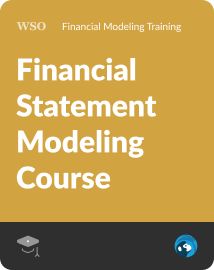Eurodollar
United States dollars deposited outside of the U.S. and not controlled by the U.S. Federal Reserve
What Is the Eurodollar?
The Eurodollar currency is United States dollars deposited elsewhere and out of the Federal Reserve’s control, including reserve requirements, discount rates, or open market operations. It is also free of banking regulations and not subjected to FDIC insurance.

Banks and corporations usually find the lack of regulations attractive due to its lowered costs from not paying commissions, higher flexibility and interest rates, and the ability to structure their financial operations more freely whenever the domestic market is underperforming.
Although there are downsides to this currency, notably volatility and high degrees of risks due to its decentralized operations, the market continues to boom since the US dollar remains the reserve currency, dominating global trade.
For clarification, even though the name includes “euro,” it does not necessarily mean that the US dollar needs to be deposited in Europe. Instead, it could be anywhere outside of the states or its domicile. The name’s origins, however, stemmed from a series of historical events.
Key Takeaways
- Eurodollar is a currency in the form of US dollars deposited outside the Federal Reserve's control, offering lower costs and higher flexibility for banks and corporations.
- The Eurodollar market continues to thrive due to the dominance of the US dollar as the reserve currency, despite its decentralized and volatile nature.
- The history of the Eurodollar dates back to the post-World War II era, with various narratives explaining its origin and its presence in the global economy.
- Eurodollar futures and options provide investors with opportunities to trade based on interest rates and hedge against future borrowing costs.
- The Eurodollar market offers advantages such as global trade facilitation, liquidity, and risk aversion, but also poses challenges like lack of regulation, volatility, and complexity for beginners. The transition from LIBOR to SOFR is expected to impact the market dynamics in the coming years.
History of the Eurodollar
The history of the name dates back to the early 1960s when some eastern European countries wanted to deposit and hold onto US dollars. However, the concept of owning a currency outside its home country existed after World War II.

With the US emerging as a victor and superpower and the surge of demand for the dollar after it became the world reserve currency, the presence of the money became a stronghold within the global economy.
Furthermore, the US banknotes become increasingly present in Europe due to the Marshall plan and proceeds from receiving exports. Conversely, foreign currencies, the Soviet ruble of the Soviet Union, are also deposited in American banks.
Although there is no evidence of when, where, and how the first Eurodollar account came to be,
There are various narratives to the currency’s origin story:
- One version states that the first was created in France to support Communist China by moving the US banknotes to Banque Commerciale pour l’Europe du Nord in Paris under the Soviet’s control.
- In another saying, the English bank was believed to be the culprit behind aiding the Soviet Union, who was fearful that the US would freeze its assets deposited in North American banks as a form of sanction by sending the dollars to the Moscow Narodny Bank.
- In the 1970s, there were conflicts in enacting monetary policies to regulate the Eurodollar market due to the US’s continuing experience of balance-of-payment, meaning the aggregate difference between the payment leaving and entering a country, deficits.
Eventually, the Eurodollar and the Certificates of Deposit (CDs) became direct competitors for the short-term money market, with the former triumphing in the 1980s due to the FED’s limitations on domestic deposits and the US’s commercial deficits, amongst other causes.

Modern-day investors use its interest rates as benchmarks for corporate funding to determine credit risk levels from an interbank perspective.
Understanding the Eurodollar
The lack of regulation from the US Federal Reserve means that deposits can pay higher interest, despite potential risks supposing that their domicile runs into political or economic turbulence.

Having a foreign currency deposited within the banking system also leads to liquidity issues if the aforementioned risks occur, although the Eurodollar market is becoming a primary intentional capital market.
With Eurodollar’s established presence in the global economy, short-term maturities, including deposits within a week, are based on fed fund rates, while longer ones correspond to the London Interbank Offered Rate (LIBOR). Deposits range from $100,000 to $5 million.
Almost all market transactions happen overnight and mature the next business day, meaning that should the activity commence on Friday, it will take around four days to go through, facilitated by Fed-wire and CHIPS systems.
Within the Euromarkets expansion that sees deposits not included in US target aggregates expanding more than 35% alone back in 1981, the unpredictability of the Eurodollar comes under question when determining its usefulness in the context of money stocks.

Nonetheless, the market’s growth is mainly attributed to the growing demand for Euro-market credit via the balance-of-payments finance, composed mainly of sovereign borrowers.
Furthermore, investors use these deposits to generate more deposits through interest since it is outside of the US banking system. These activities then become tangent with non-bank depositors and borrowers through arbitrage.
What is LIBOR Rate?
The rate is a benchmark interest rate that primary global banks and financial institutions refer to when lending to each other through an international or interbank market, particularly for short-term loans. LIBOR is also updated daily by the Intercontinental Exchange (ICE).

More specifically, the rate helps to determine interest rates for financial contracts like consumer loans, which entail adjustable-rate mortgages, reverse mortgages, home equity lines of credit (HELOCs), student loans, and credit cards.
The rate is based on the US dollar, the reserve currency, the euro, the British pound, the Japanese yen, and the Swiss franc. The following maturity lengths are accounted for: overnight, one week, and one, two, three, six, and twelve months.
Large banks like Bank of America, Barclays, Deutsche Bank, UBS, and JP Morgan Chase are responsible for determining the rate.
However, this rate is being replaced by the Secured Overnight Financing Rate (SOFR) because of recent scandals and validity concerns until June 30, 2023.
What are Eurodollar Futures and Options?
For investors to understand how futures work, they need to understand a few concepts.

The premise of the futures transaction is through derivative contracts, which is an agreement between two or more parties of the contract's value based on underlying assets like security (a financial instrument with monetary value) or through indexes (asset groups).
Futures refers to the derivative contract agreeing to buy or sell an asset at a specific future date at a future price. These predetermined future trading dates depend on the investor's speculation about the asset's pricing trends.
Eurodollar futures (ED futures) are a financial instrument that falls under cash-settled contracts based on the LIBOR rate upon expiration. The symbol for futures, GE, is currently the world's most popular interest rate-based trading asset, with 80% of activity on the CME Globex.
Beyond investors and governments being fond of the valuable instrument, companies and banks are also active in its trading market. This is because of the ability to preserve the lower interest rate in case of future borrowing when the rate is higher.

The contract's underlying assets include the time deposit and its corresponding principal value of $1 million, with a fixed maturity of three months. After the termination of the contract, the seller can transfer the investment instead of repaying via the underlying assets.
The futures contracts are also based on a price index, where the value is calculated by the 100 minus the interest rate (e.g., an interest rate of 7% would be 100-7=93, or $93) – this shows that everyone can identify the interest rate and determine their investment strategy.
Similar to normal relationships between borrowing and interest rates, the trading volume, or, in this case, contract prices, decreases when the interest rate increases. The inverse relationship works for the counter-example when the rate drops due to demand changes.
A less risky alternative would be the options market, where the contract gives the right but is not bound for the investor to purchase or sell the shares at predetermined times. The pricing mechanism within this market also resides in the underlying security like stocks.

Most investors pay a premium – how much they paid for fixed-income security minus the issued cost of the given security – that resembles 100 underlying asset shares for an options contract.
Options contracts are divided into two types, call options and put options. The call option is when the buyer purchases the stock at the agreed set price, known as the strike price, before the expiration. The put option, in contrast, is to sell a stock at a specific price.
There are specifications regarding futures and options contracts listed and detailed by CME.
Advantages of Eurodollar
Some of the advantages are as follows:

- According to Chicago Mercantile Exchange (CME), the organization launching ED futures, the market is now the world’s most actively traded futures contract with unparalleled liquidity – supposing that the domicile does not experience significant adverse events impacting the deposit.
- The market also helps to fuel foreign trade for cheaper imports and exports.
- The internationality of this currency also provides a global sense of capital flows, credit demands, and rate expectations while providing convenient access through services like the central limit order book and Exchanges for Related Positions, otherwise known as EFRPs.
For risk aversion and minimizing exposure to vulnerability, the market offers up to 80 expirations from one to four years. Regarding its versatility, CME offers the following options in purchasing futures.
- Bundles: enable buyers to trade futures in equal proportions according to, typically, the first quarterly contract. These bundles are usually color-coded to categorize the duration until expiration.
- Packs: represent a series of four consecutive futures (compared to four quarterly expirations for bundles) for purchase and pricing dependent on the previous day’s closing price.
- Serial: similar layout as Bundles but with varying expiration dates.
Due to these benefits, ED futures have been chiefly hovering around the 1.1 to 1.3 million trading volume range in the first few days of July 2022. In comparison, the volume for options fluctuates between 400 to 835 thousand within the same days.
To further indicate its ever-growing presence, the market was responsible for over 90% of all loans in 1997. Earlier evaluations of the market value were around $37 billion but grew to $1.67 trillion in 1985 and over $13.8 trillion in 2016.

When compared to metrics such as the E-mini S&P 500 or Crude oil Futures, the ED futures market surpasses them both, justifying the high and sometimes volatile daily trading activities.
The STIR ecosystem helps to manage such trades.
Disadvantages of Eurodollar
Without regulation, there is a lack of discipline and hardships to manage the market behaviors, potentially devaluing the domestic currencies and changing exchange rates depending on investment trends.

There is also the danger of excess credit due to large withdrawals to fund such purchases from a personal level, meaning that an overabundance of credit is being used, overtaking the boundary set by the credit limit on a card.
Since the deposit is outside its domicile without federal operation, there is limited statistical information or official data on market trends and growth. Moreover, international and political risks can cause price volatility and drastic demand changes.
Moreover, tariffs, international relations, or trade wars are examples of causes behind price fluctuations. The same also occurs when the Federal Reserve policy changes despite being a foreign deposit, making it dependent on Federal Open Market Committee gatherings.
Lastly, the complexity behind this model is harder to grasp for beginners. Therefore, one should be proficient in financial concepts before immersing into the Eurodollar market, including understanding normal and inverted yield curves, linearity concepts, convexity adjustments, and convexity biases.
What Is Next for the Eurodollar Market?
Although there is a brief phasing out period for the LIBOR rate, there is no designated termination of its use over the long term. Still, given that the Alternative Reference Rates Committee (ARRC) recommends SOFR, it is likely that LIBOR will remain in the background.

With SOFR’s adoption in 2018, the Eurodollar experienced drops in market activity. In 2017, the daily trading volume surpassed 4.14 billion, which equals $4 trillion notional, with an open interest above 50.21 million contracts, or $50 trillion notional.
Nevertheless, in 2020, there is a rise in demand, driving up the market targeting the tightening of policies in 2023 and 2024. The investors’ speculation derives from the expectation of higher rates and falling US Treasury debt prices due to fiscal stimuli before the election.
As of late June to early July of 2022, the volume merely exceeds one million, with the peak closing on two million. At current rates, SOFR futures will soon overtake the LIBOR and ED futures.
Regardless of the shift in market dominance, according to the Federal Reserve, the ED futures market is projected to have an 80% likelihood of a rate increase due to the persisting inflation up until December 2022.
Further predictions include a 100% certainty of a 25 basis-point (or 25 one-hundredth of a percent, which in this case is 0.25%) increase between March and June next year for futures contracts. In addition, there are believed to be three hikes throughout 2023.

When looking beyond 2023, however, the yield curves suggest an inverse or flattening trajectory, indicating a potential rate reduction by early 2024, around the January to February mark.
While some speculate the reasoning behind this change to be the imposition of quantitative easing (QE) by the Fed, others believe global dealer banks, which are financial institutions that buy and sell government debt securities, are causing the deflationary market impacts.
Researched and authored by Max Guan I LinkedIn
Free Resources
To continue learning and advancing your career, check out these additional helpful WSO resources:









or Want to Sign up with your social account?